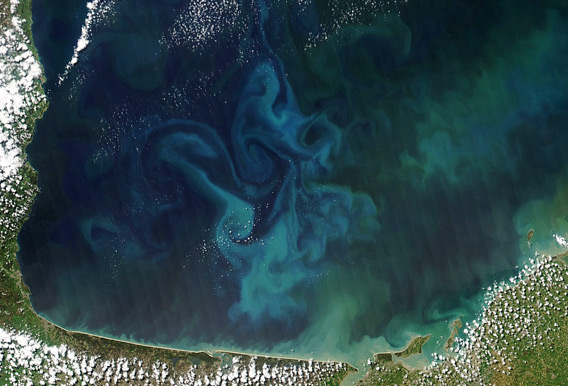
Scientists agree that there’s oxygen from ocean plants in every breath we take. Most of this oxygen comes from tiny ocean plants – called phytoplankton – that live near the water’s surface and drift with the currents. Like all plants, they photosynthesize – that is, they use sunlight and carbon dioxide to make food. A byproduct of photosynthesis is oxygen.
Scientists believe that phytoplankton contribute between 50 to 85 percent of the oxygen in Earth’s atmosphere. They aren’t sure because it’s a tough thing to calculate. In the lab, scientists can determine how much oxygen is produced by a single phytoplankton cell. The hard part is figuring out the total number of these microscopic plants throughout Earth’s oceans. Phytoplankton wax and wane with the seasons. Phytoplankton blooms happen in spring when there’s more available light and nutrients.

And the density of phytoplankton varies. They sometimes float just at the surface. At other times and places they can be a hundred meters – about 100 yards – thick.
By the way, by about 400 million years ago, scientists say, enough oxygen had accumulated in Earth’s atmosphere for the evolution of air-breathing land animals. But free oxygen by itself wasn’t enough. Another form of oxygen was also essential: the build-up of a special kind of oxygen at the top of Earth’s atmosphere. There, where three atoms of oxygen bonded together, ozone formed. This layer of ozone at the top of Earth’s atmosphere shields land organisms from harmful ultraviolet radiation from the sun.
Bottom line: Tiny ocean plants called phytoplankton contribute 50 to 85 percent of the oxygen in Earth’s atmosphere.











